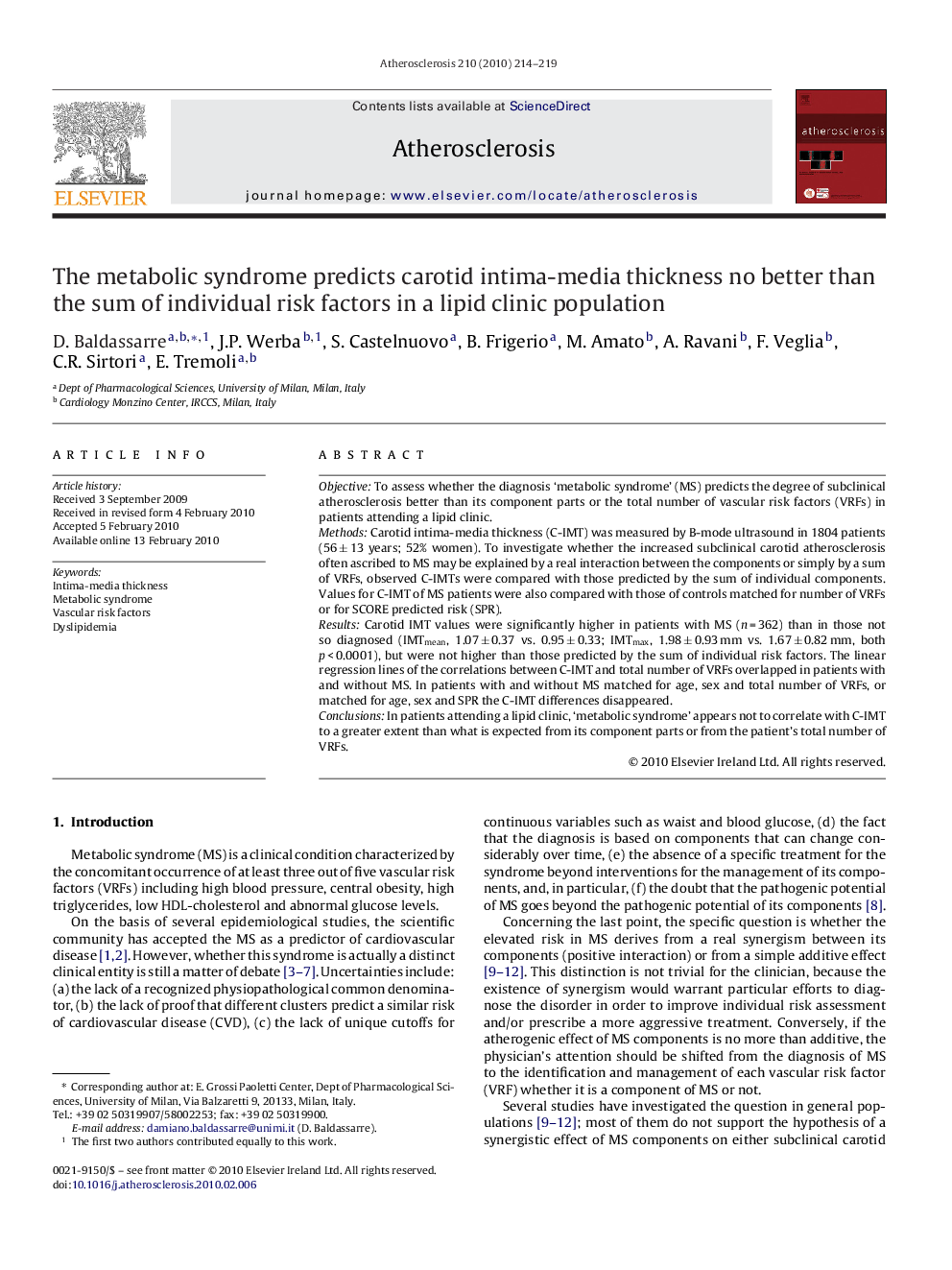| Article ID | Journal | Published Year | Pages | File Type |
|---|---|---|---|---|
| 5950923 | Atherosclerosis | 2010 | 6 Pages |
ObjectiveTo assess whether the diagnosis 'metabolic syndrome' (MS) predicts the degree of subclinical atherosclerosis better than its component parts or the total number of vascular risk factors (VRFs) in patients attending a lipid clinic.MethodsCarotid intima-media thickness (C-IMT) was measured by B-mode ultrasound in 1804 patients (56 ± 13 years; 52% women). To investigate whether the increased subclinical carotid atherosclerosis often ascribed to MS may be explained by a real interaction between the components or simply by a sum of VRFs, observed C-IMTs were compared with those predicted by the sum of individual components. Values for C-IMT of MS patients were also compared with those of controls matched for number of VRFs or for SCORE predicted risk (SPR).ResultsCarotid IMT values were significantly higher in patients with MS (n = 362) than in those not so diagnosed (IMTmean, 1.07 ± 0.37 vs. 0.95 ± 0.33; IMTmax, 1.98 ± 0.93 mm vs. 1.67 ± 0.82 mm, both p < 0.0001), but were not higher than those predicted by the sum of individual risk factors. The linear regression lines of the correlations between C-IMT and total number of VRFs overlapped in patients with and without MS. In patients with and without MS matched for age, sex and total number of VRFs, or matched for age, sex and SPR the C-IMT differences disappeared.ConclusionsIn patients attending a lipid clinic, 'metabolic syndrome' appears not to correlate with C-IMT to a greater extent than what is expected from its component parts or from the patient's total number of VRFs.
